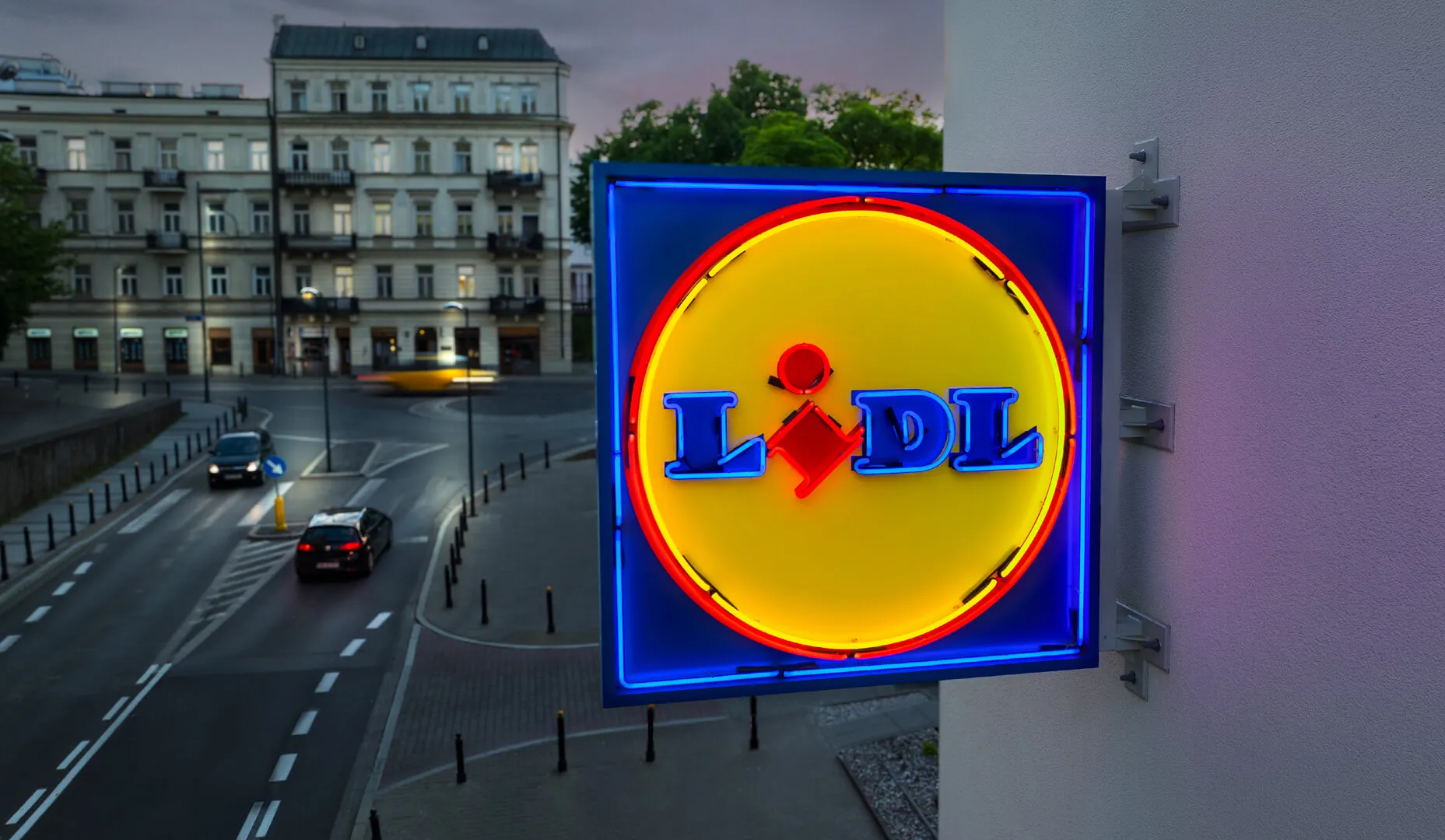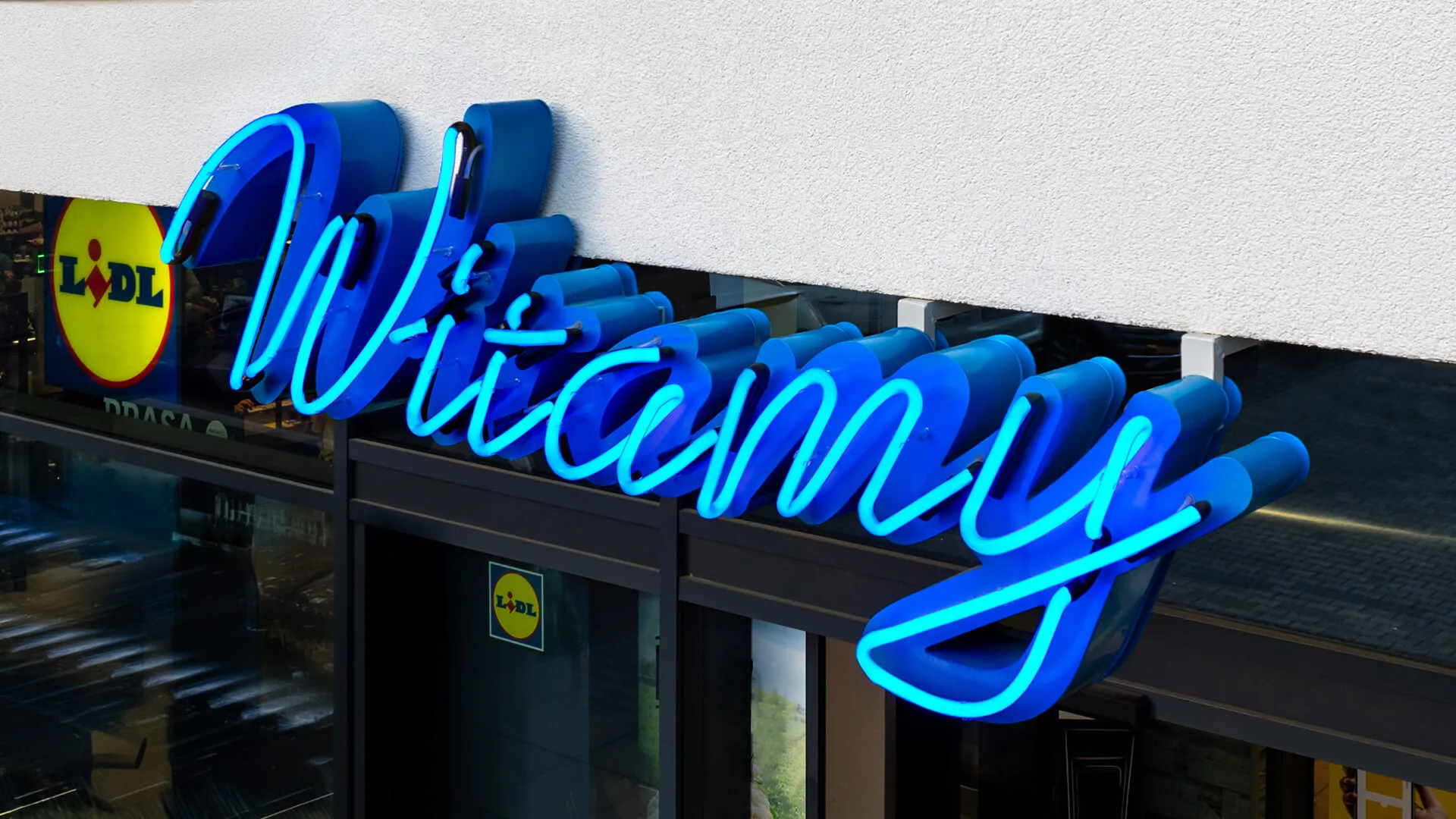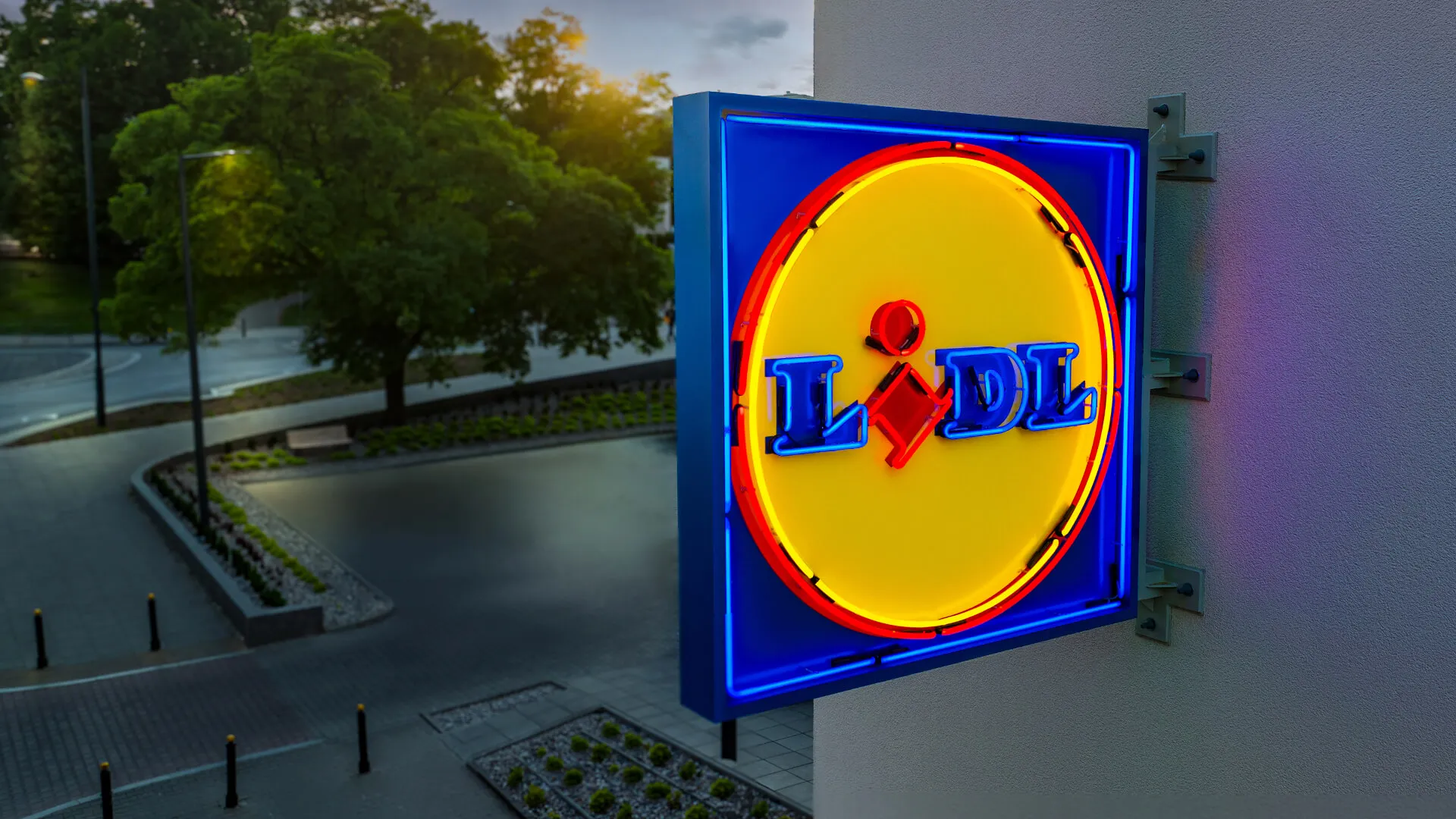We recently had the opportunity to participate in a fascinating project, which will certainly remain in our memories for a long time. It concerns the design and execution of a double-sided neon sign in the shape of the 'Lidl' logo and the word 'Welcome' on the façade of a shop for a well-known German shop chain, which opened its next branch in Warsaw on Tamki Street. Why was this project special for us? Well, designing and creating neon signs is not only our job, but also our passion. We have been doing this for years, and it started with learning about the history of creating traditional glass neon signs and falling in love with this unusual craft. This time we were able to design and make a traditional neon, double-sided perpendicular semaphore one of a kind!

1960s-style neon sign for Lidl
Working on this project brought us great satisfaction, especially as the result is truly unique. Our neon sign not only reflects the Lidl logo, but also alludes to the aesthetics of the communist era. You will not find another one like it in Poland, or even in the whole world! This one is one of a kind, as it is made of original hand-moulded glass neon. The colour scheme of the sign has been carefully thought out and harmonises perfectly with Lidl's visual identity. The neon double-sided semaphore mounted perpendicular to the façade has impressive dimensions — 1.5 m × 1.5 m — making it highly visible and eye-catching. The design and personalisation of this neon sign was cautious, capturing the spirit of the 1960s with a modern twist. We went to a lot of trouble to ensure that the double-sided perpendicular neon semaphore blends harmoniously with the architecture of the building, creating a coherent entire. In addition to the neon Lidl logo, we also made the spatial neon sign 'Welcome'. It was a big challenge, but the effort paid off, and the result meets the highest quality standards.

We made no secret of the fact that we were working under a lot of time pressure. The shop had a strict opening date, which introduced a certain amount of nervousness.
Nevertheless, we managed and can now rejoice in our joint success. We are proud that such a reputable company as Lidl trusted the Pretende brand. For years, we have been recognised on the market all over Poland and have successfully carried out various sign commissions.
The greatest reward after a completed project is always positive feedback from the client. In this case, there was no shortage of praise and words of appreciation. Such feedback gives a great sense of satisfaction and fulfilment, which drives me to take on more challenges. We look to the future with this attitude. We are ready for new projects for the 21st century.

The remarkable story of traditional neon signs
Creating traditional neon signs is a true art that requires precision, skill, and patience. The process began with design, where the creator would prepare an accurate drawing of the lettering or graphics in actual size. This was followed by the bending of glass tubes, made from sodium or borosilicate glass. The tubes were heated over a gas burner until they became flexible, and the craftsman manually formed them into the correct shapes according to the design. Once formed, the tubes were thoroughly cleaned inside to remove any impurities. The next stage was to fit electrodes to the ends of the tubes, which were then connected to a vacuum pump. This removed the air from inside the tube, creating a vacuum, after which the tubes were filled with a suitable gas, usually neon (which gives a red light) or argon (which gives a blue light). Once filled, the tubes were sealed and tested for leakage and proper illumination. The finished neon tubes were mounted on special frames or panels using acrylic brackets and insulators, then installed at the target site and connected to a transformer that provided the correct voltage to power the neon lights.
Thanks to the precision and dedication of craftsmen at every stage, traditional neon signs became a popular advertising element and aesthetic symbol of the 20th century, and now, thanks to new design possibilities, neon signs are thriving into the futurism of the 21st century. And this is our goal — Pretende is growing and taking on more and more new challenges, and the greatest reward for us are orders from well-known and reputable companies because they testify to the trust we have earned with our presence on the market for many years. Thank you!

